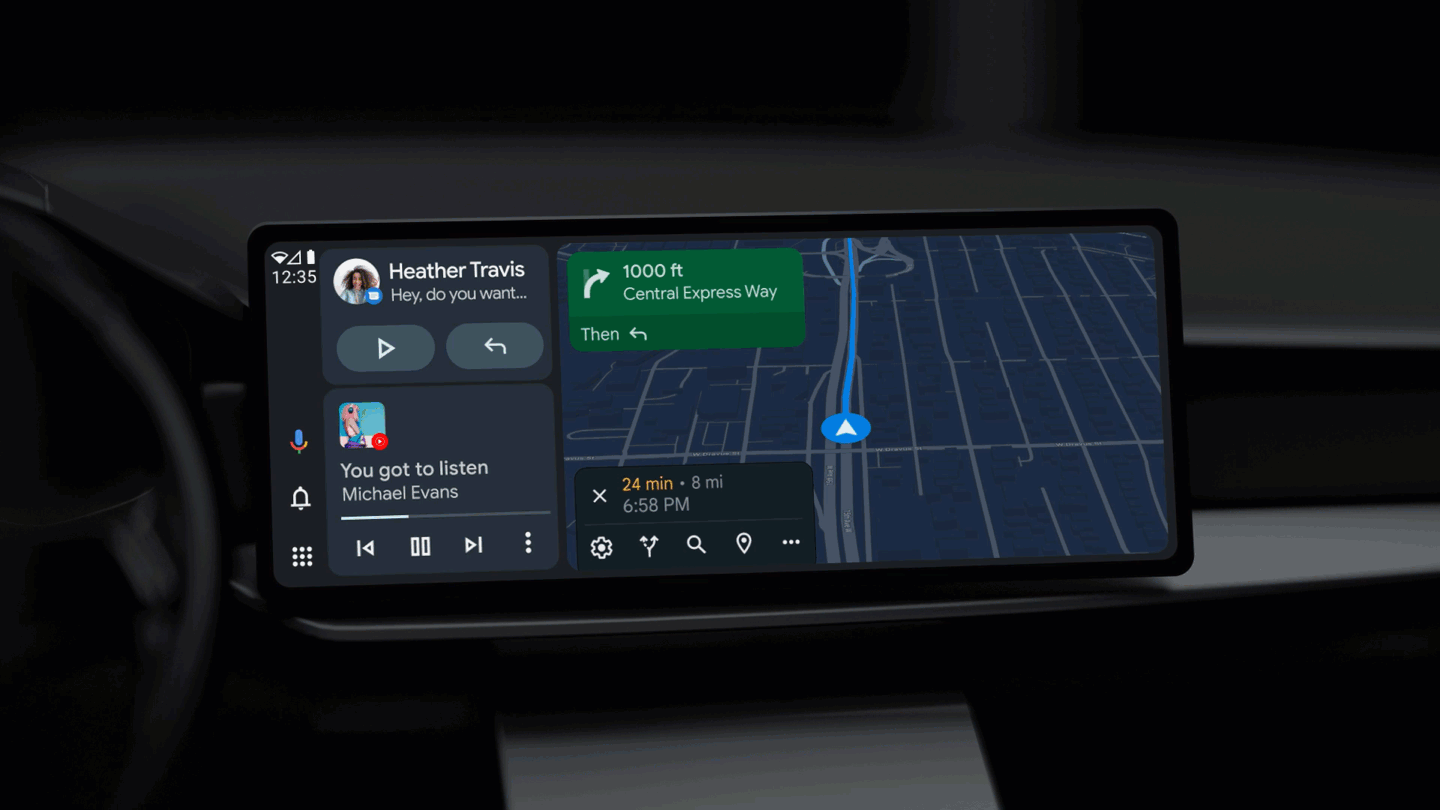When it comes to in-car infotainment systems, Android Auto and Apple CarPlay have changed the user experience for drivers, making it more consistent across makes and models. Both offer an innovative and connected approach that's modeled after the way we use our smartphones, which spares us the trouble of becoming familiar with another interface. Android Auto works with all the best Android phones, just like Apple CarPlay does with most iPhones. Most importantly, they allow drivers to access their personal data and preferences no matter the vehicle they're in, without having to set their preferences from scratch every time they switch cars, which is particularly convenient when using a rental.
Still, Android Auto and Apple CarPlay aren't that similar, and each has strong suits and shortcomings. Let's see how to compare against one another, especially considering the new functionality brought by Android Auto's recent overhaul.
User interface
Until recently, the Android Auto interface only showed a single app on the car's screen, with no multitasking option. Apple CarPlay, on the other hand, has offered a dashboard UI since iOS 13, which consolidates music, maps, and Siri suggestions into a single screen. This makes it easier to access everything you need at a glance without switching from one app to the other.
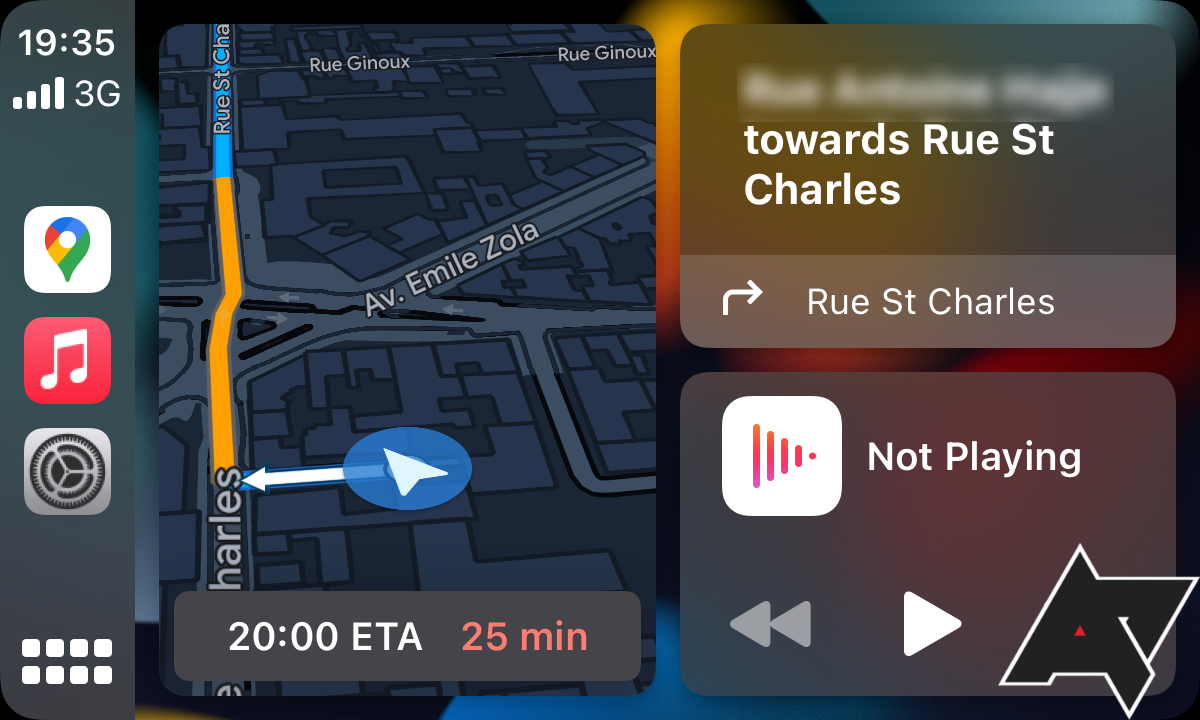
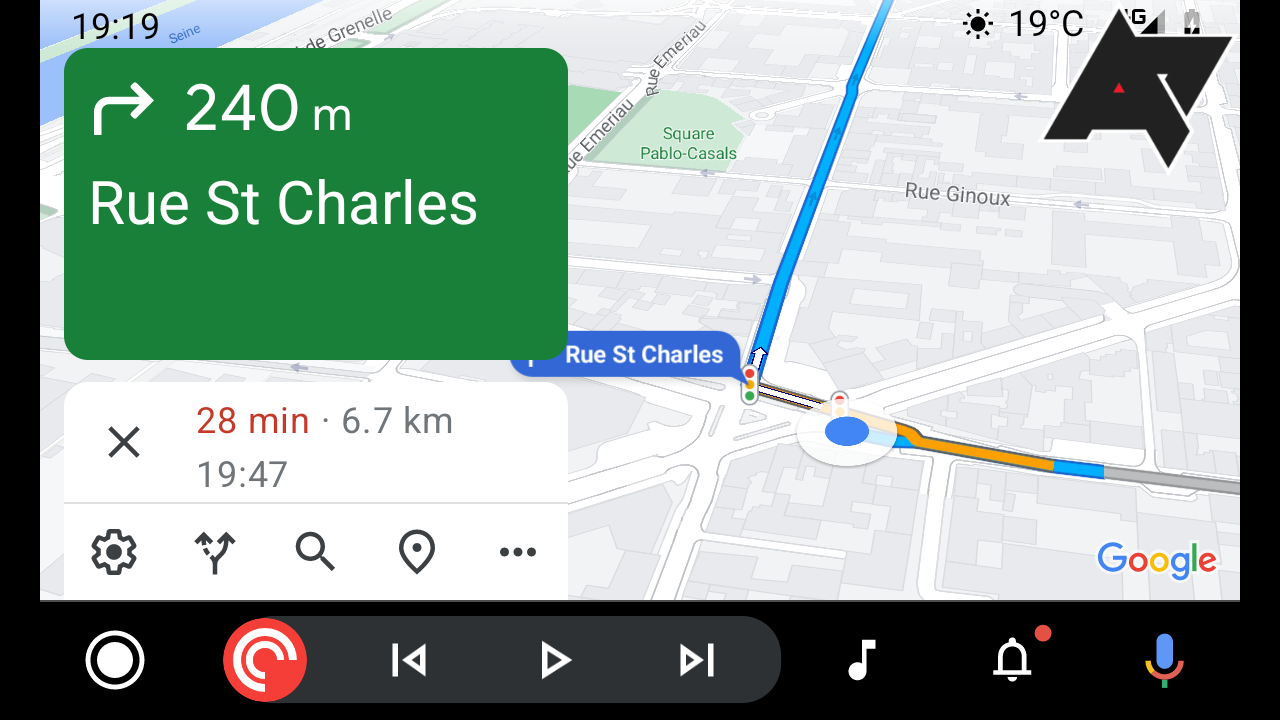
Left: Apple CarPlay's dashboard, which shows various apps on a single screen. Right: Android Auto's new interface, which shows various apps at the same time and shortcuts to essential ones.
Google recently updated Android auto to always shows shortcuts to the latest used music, navigation, and phone apps at the bottom, making it easier to jump to them while driving, bringing it on par with its rival. The Now Playing card is also smart, as it knows your default apps, conveniently showing Spotify or YouTube Music, depending on the one you use. It isn't perfect since you can't fully customize the layout, but it offers a better user experience.
Winner: Tie
Navigation
When using navigation apps such as Google Maps or Waze, Android Auto lets you pan and explore the rest of the itinerary just like you would on your phone. Even though iPhone users don't have to stick to Apple Maps, things aren't intuitive with Apple CarPlay when using navigation apps, as you have to use arrow keys to move the map, which is dangerous and counter-intuitive when driving.
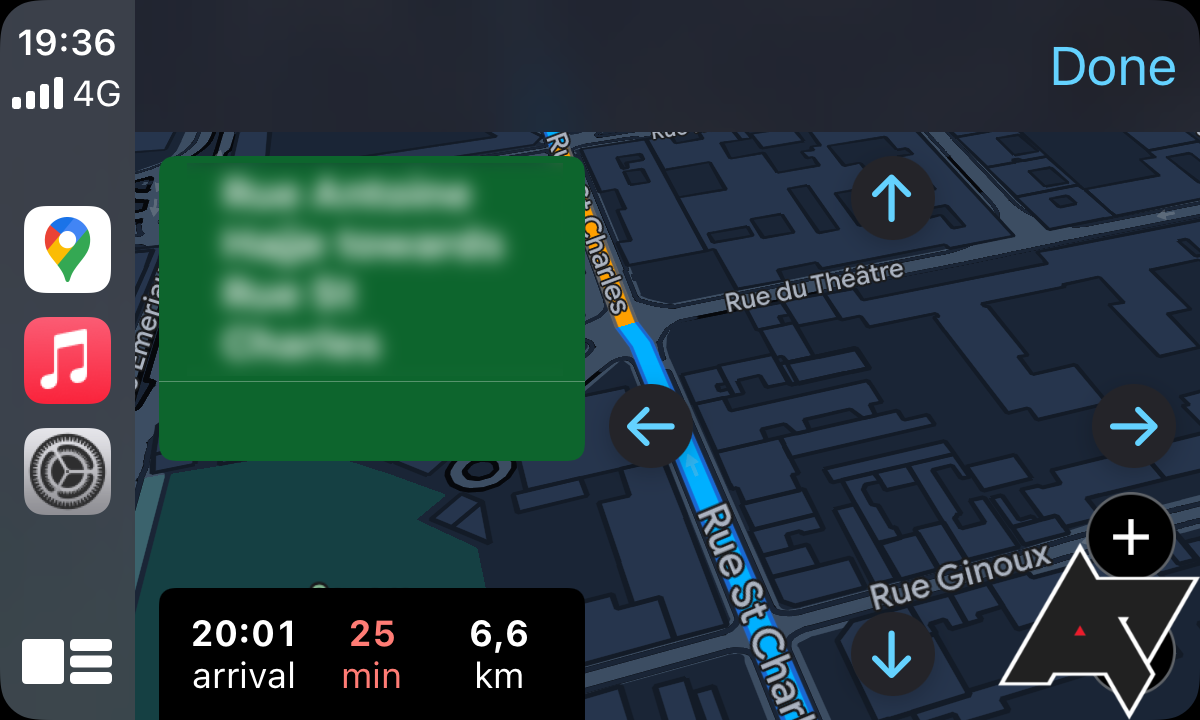
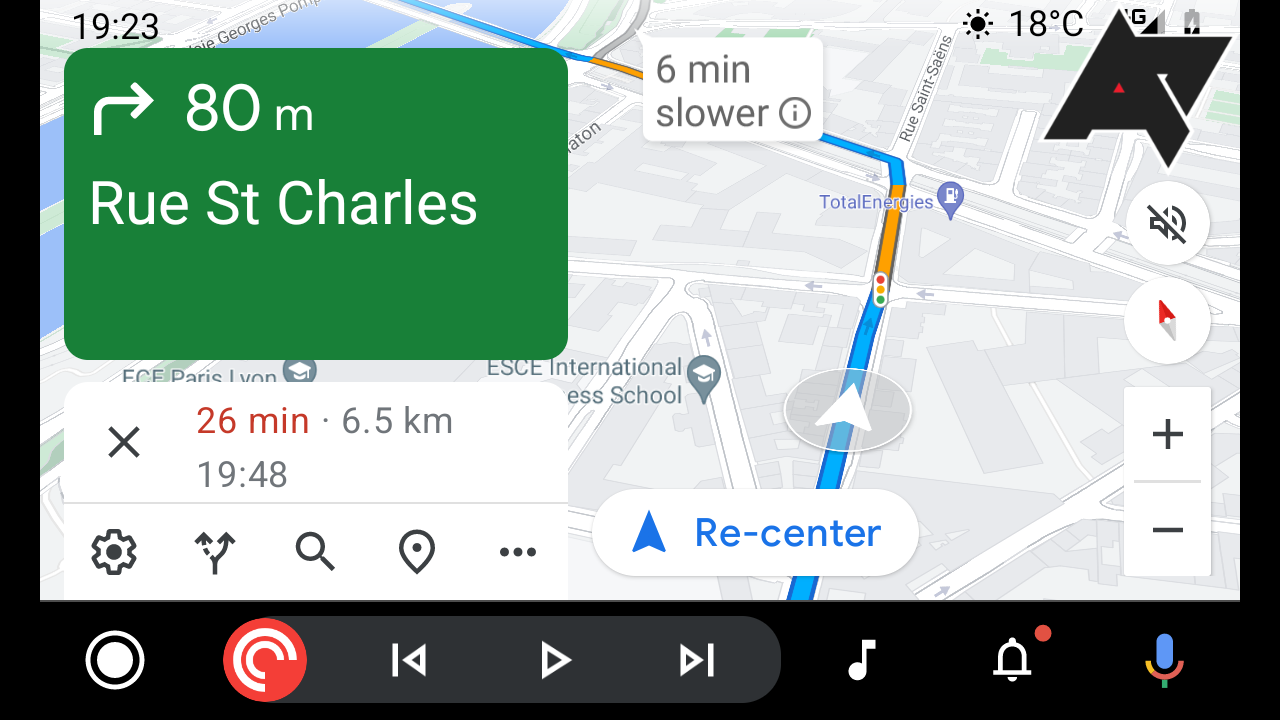
Left: You need to use arrows to pan the map with CarPlay. Right: You can swipe on the screen to explore the map with Android Auto.
Similarly, while taking an alternative route is as easy as tapping the one highlighted in gray on Android Auto, doing this does nothing on CarPlay. Instead, you have to go back to the route options, hoping to tap the one that corresponds to the route you saw on the map. Android Auto has the upper hand compared to CarPlay if you want to explore the map or find alternative routes when driving.
Winner: Android Auto
Voice assistant
While driving, using a voice assistant and voice commands is probably the easiest way to interact with a car or phone. CarPlay and Android Auto support this functionality, thanks to Siri and Google Assistant. The latter is usually praised for better understanding requests and supports a more comprehensive range of third-party services. With the 2022 Android Auto update, expect Google Assistant to get even better. The update lets you message or call your favorite contacts with a single tap and features contextually-suggested responses to messages. Android Auto won this round by a hair before Google announced the update, but now it outpaces CarPlay with Siri assistant.
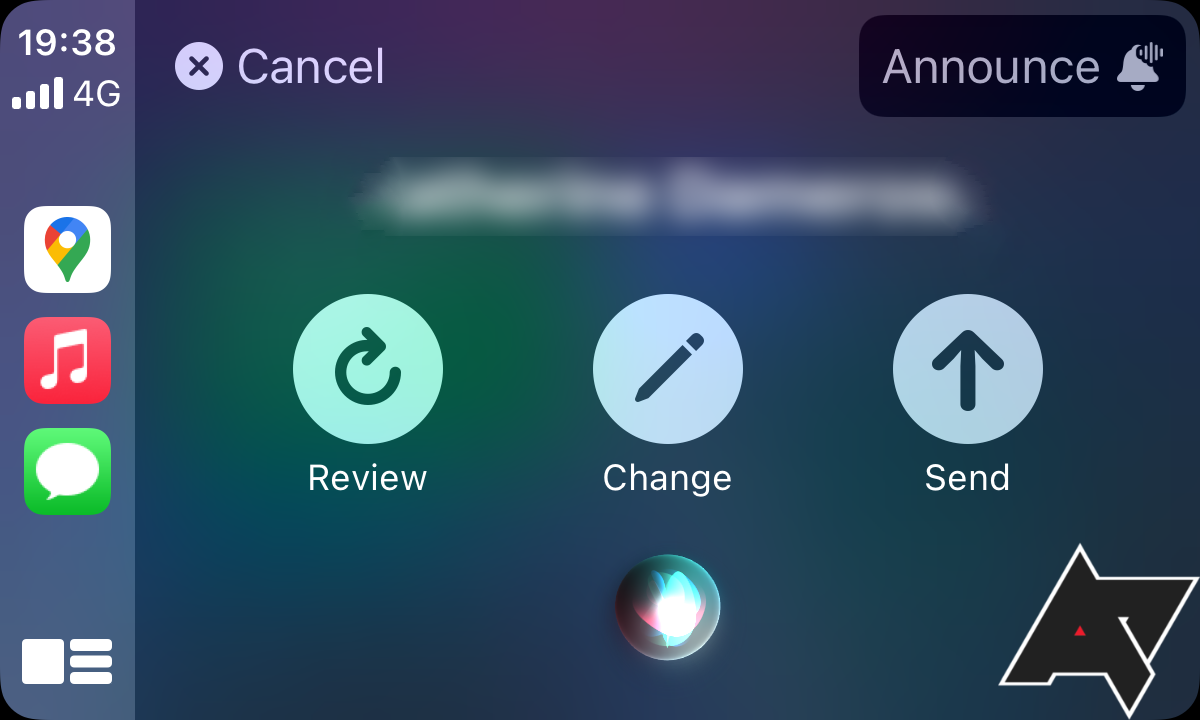
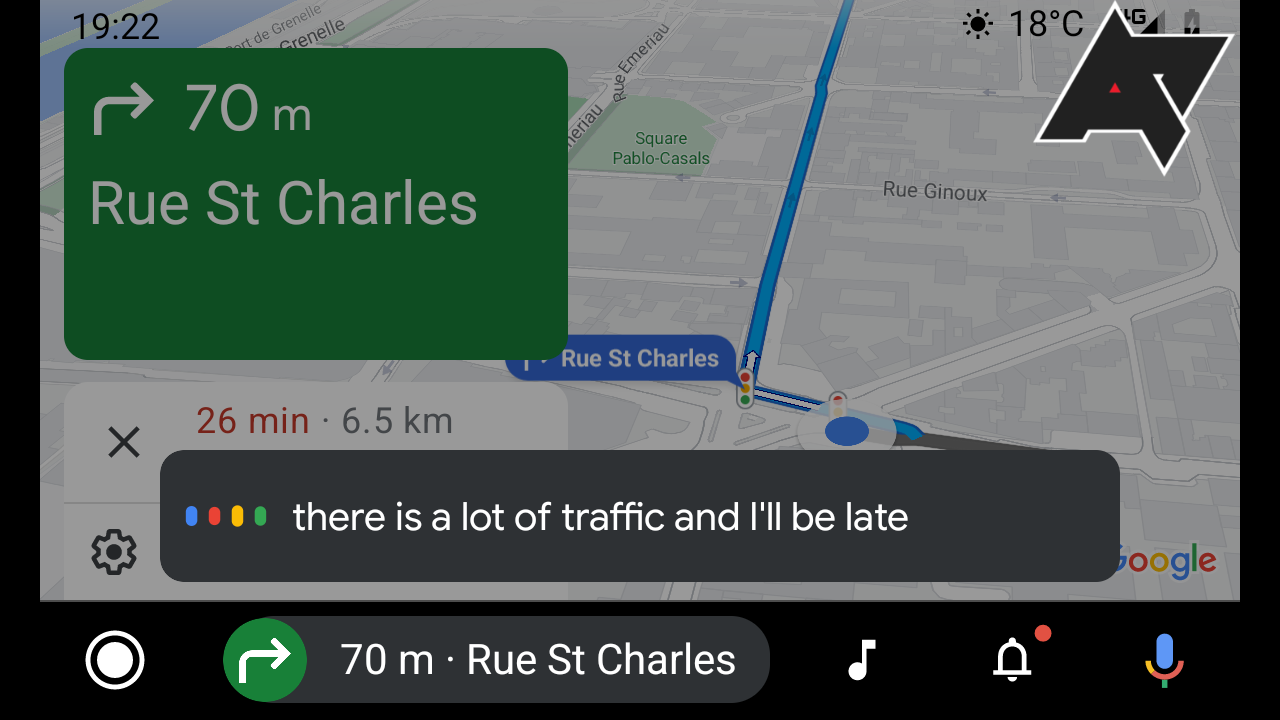
Left: CarPlay's interface lets you change or send a message but doesn't display the message. Right: Android Auto's interface is less intrusive and shows a preview of the message on top of the app you're using.
In-car interactions are also less frustrating thanks to Google Assistant's ability to transcribe what you're saying on the screen. This is particularly useful when sending a message, as it lets you notice typos easily. Some might argue this is unsafe while driving, but the transcription only displays for a few seconds before disappearing, forcing the driver to put their focus back on the road.
Winner: Android Auto
Calls and notifications
You'll likely get notifications and calls while driving, whether you like it or not. While both operating systems are designed to handle these safely, Apple CarPlay is more intrusive than Android Auto because banners display at the bottom of the screen, which prevents you from seeing where you're supposed to go if you need guidance. On Android Auto, banners appear at the top of the screen. Unlike Apple CarPlay, Android Auto lets you dismiss or mute a notification, which is convenient if you don't want to be notified about updates sent to a WhatsApp group but want to keep receiving other notifications.
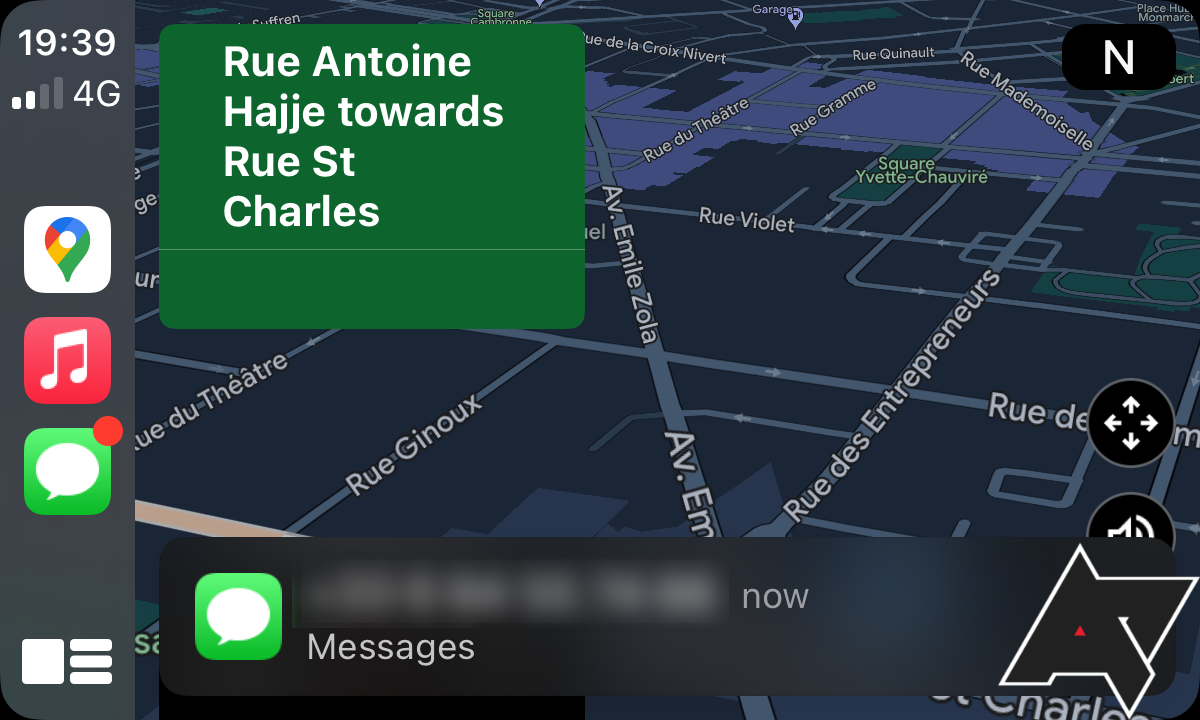
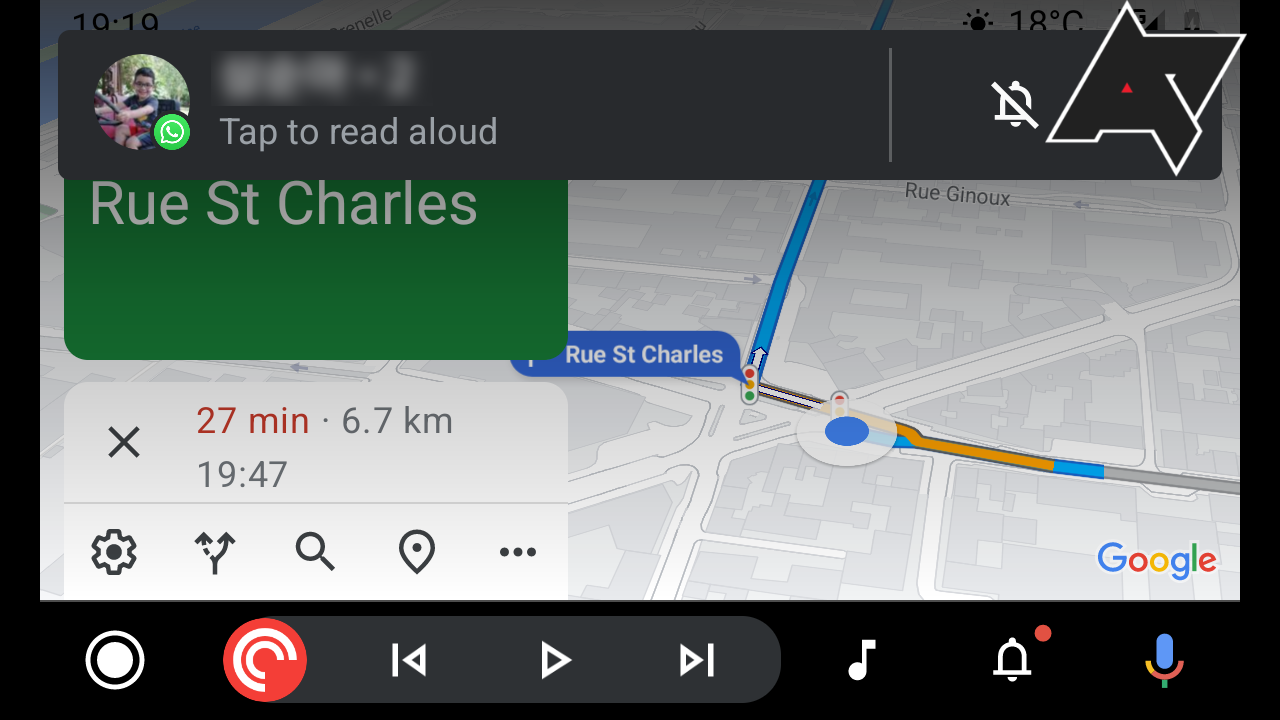
Left: Apple CarPlay doesn't let you interact with notifications. Right: Android Auto allows you to mute and dismiss notifications.
When it comes to "reading" a notification, Android Auto does so discreetly. Apple CarPlay, on the other hand, takes up the whole screen, which is invasive when driving. Worse, Apple CarPlay displays it on the full screen when receiving a call, which hides what was previously displayed. On the other hand, Android Auto shows a small banner at the top of the screen. If you pick it up, the first operating system stays on the call page, while Android Auto shows the controls in the dock.
Winner: Android Auto
Third-party apps
Both platforms allow users to install third-party apps, such as navigation, music, or podcast apps. However, the number of apps available isn't quite the same between Android Auto and Apple CarPlay, as the first is compatible with more apps than the second, especially regarding messaging. While the first intent of driving isn't to send out messages, it's good to know your favorite apps are easily usable when driving.
With Android Auto's 2022 update app, support gets even better. Android for Cars App Library version 1.3 offers enriched navigation features, media recommendations, and progress bars for podcasts and audiobooks. If your car has Google built-in, get ready for some major improvements. Soon you'll be able to watch YouTube, Tubi TV, and Epix Now while parked. Google also plans to add options to browse directly from your car's infotainment screen. You can also cast from your phone to the car's display while parked.
Winner: Android Auto
Wireless
Although Apple CarPlay and Android Auto can work wirelessly, some manufacturers or models don't support wireless Android Auto, but they work fine with Apple CarPlay. This isn't necessarily a big deal, as a simple dongle can make virtually any car compatible with wireless Android Auto, but it's still an extra hassle. Also, when connected wirelessly, some Android devices get hot over long drives, which rarely happens with an iPhone. Finally, Android Auto drains more battery when used wirelessly compared to Apple CarPlay. Due to these issues, Apple CarPlay is at an advantage, even though wireless connectivity is not Android Auto's worst drawback.
Winner: Apple CarPlay
Screenshots
Although taking a screenshot while driving remains a rare occurrence, Apple CarPlay and Android Auto offer the option to take a snippet of the screen and share it. However, while the process is as simple as pressing the volume up and side buttons simultaneously with an iPhone, it's more painstaking with Android Auto. You probably won't choose an iPhone over an Android handset for taking screenshots of your car's screen, but if you need to, you better have an Apple device.
Winner: Apple CarPlay
It's a close tie
When comparing Android Auto vs. Apple CarPlay, we prefer Google's operating system for most of these topics. Still, it's important to try both and form your own opinion about what's important to you when driving. We found Android Auto to be less invasive when it notifies you while driving, which helps keep your attention on the road and the map. It's also better at showing a preview of what you said or a message you're about to send instead of showing the voice assistant logo on the full screen. Recent changes have also improved its interface, making it look more modern and allowing you to multitask using your car's touchscreen.
If you're new to Google's vehicle head unit interface, check out our selection of the best on-screen Android Auto apps from the Play Store.


